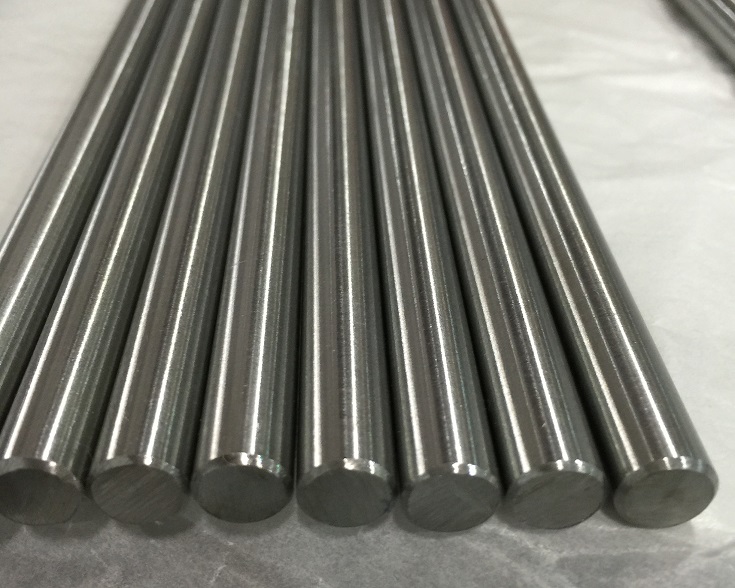Titanium Zirconium Molybdenum (TZM) Alloy for Hot Runner Nozzles

Why use titanium zirconium molybdenum (TZM) alloy for hot runner nozzles? In this article, we will try to find the answer to this question.
Titanium Zirconium Molybdenum (TZM) Alloy Were Used to Makef Hot Runner Nozzles
According to reports, HRSflow is completing the expansion of its 3,000-square-meter factory in San Polo di Piave, Italy. The expansion is designed according to lean production standards to make the hot runner assembly process more efficient. The goal is to ensure increased production capacity and provide customers with greater flexibility.

Titanium Zirconium Molybdenum (TZM) Alloy
Since its introduction into the industry, hot runners have played a key role in improving the injection molding process. Although the capital cost is greater than that of cold runners, its ultra-high production efficiency makes it a long-term and more economical choice. The improvement of system performance can produce parts with excellent appearance and increase part functions. In addition, the hot runner improves energy efficiency and saves plastic raw materials, thereby shortening cycle time and reducing part costs.
Given the advantages of hot runners, the world's large and small enterprises, including those mentioned above, are implementing hot runners and seeking various solutions for further optimization. Of course, the focus of this article is not on this, but on one of the important parts of the hot runner nozzle.
Hot runner technology is mainly to heat the plastic melt between the injection molding machine nozzle and the cavity to reduce the injection pressure so that the plastic melt can fill the cavity smoothly, so as to obtain high-quality plastic products. And the choice of nozzle material is related to the production efficiency, cost, and quality of the finished product of the hot runner system.
Pure molybdenum has a very high melting point, good strength, low thermal expansion coefficient, and excellent thermal conductivity, and is a good comprehensive candidate material for most high-temperature applications. Titanium Zirconium Molybdenum (TZM) Alloy is a molybdenum alloy. Like pure molybdenum, TZM alloy can be produced by powder metallurgy.
Although TZM alloy is 25% more expensive than pure molybdenum, in some applications, the additional cost is offset by its increased strength at high temperatures. The recrystallization temperature of TZM alloy is higher than that of pure molybdenum, which reduces the possibility of embrittlement at high temperatures. In high-temperature applications, TZM alloy has higher strength, hardness, creep resistance, and ductility, which can ensure that it will not weaken or become soft.
Therefore, titanium zirconium molybdenum (TZM) alloy is currently a suitable material for manufacturing nozzles.
TZM Alloy VS Pure Molybdenum
TZM is a molybdenum-based alloy enhanced with small but strategic additions of 0.5% titanium, 0.08% zirconium, and 0.02% carbon. These elements interact synergistically to refine grain structure and improve high-temperature strength through dispersion strengthening and carbide formation.
Compared to pure molybdenum, TZM offers:
- Higher recrystallization temperature
- Improved creep resistance
- Superior wear and oxidation resistance
- Better thermal conductivity than many high-performance steels
These properties make it an ideal candidate for demanding thermal environments, like those found in hot runner nozzles.
Further reading: TZM Alloy vs Pure Molybdenum
Why TZM for Hot Runner Nozzles?
Hot runner systems must maintain a precisely controlled melt temperature to ensure smooth, continuous injection of polymer into the mold. The nozzle, as the last thermal interface before plastic enters the cavity, experiences intense localized heating and cyclic thermal stress. Materials here must not only resist deformation but also preserve tight tolerances over time.
Here’s how TZM fits the bill:
- Thermal Stability: With a melting point above 2600°C and high thermal conductivity (~125 W/m·K), TZM handles heat more effectively than many tool steels or copper alloys.
- Mechanical Strength at Temperature: TZM maintains its mechanical integrity above 1000°C. It resists creep and sagging, which is critical in nozzle geometries that must remain dimensionally accurate.
- Reduced Maintenance: The alloy’s wear resistance extends tool life, especially in high-volume applications where downtime is costly.
- Oxidation Resistance: While TZM isn't impervious to oxidation (especially above 400°C in air), it performs far better than standard molybdenum, particularly in protective or inert atmospheres often used in controlled hot runner environments.
Conclusion
TZM alloy stands out as a premium choice for hot runner nozzles—offering long-term dimensional stability, efficient heat transfer, and resilience against thermal fatigue.
Thank you for reading our article and we hope it can help you have a better understanding. If you want to learn more about Titanium Zirconium Molybdenum (TZM) Alloy or other types of refractory metals and alloys, we would like to advise you to visit Advanced Refractory Metals (ARM) for more information.
{{item.content}}
LEVE A REPLY
{{item.children[0].content}}
{{item.content}}






